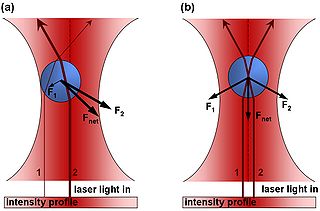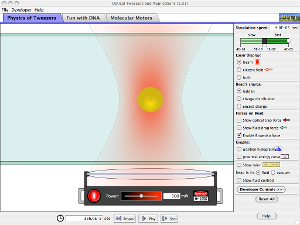Introduction
Light... what is light? Visible light, which humans can see with their eyes, is part of the electromagnetic spectrum. The electromagnetic spectrum consists of multiple different sections such as radio waves, visible light, and x-rays to name a few. All parts of the electromagnetic spectrum are a form of energy at varying levels, radio waves being less energetic and x-rays being more energetic. Another way to describe light is as electromagnetic radiation. Electromagnetic radiation can be thought of in two ways, particles and waves. Many experiments have been completed to show the duality of electromagnetic radiation. Now, what is light actually made of? How does it actually travel through space? Light consists of photons, which are very small packets of energy that travel through space as a wave. The energy of a photon is given by the frequency of the wave and Planck's constant. With this said, light, through the transferring of momentum, has the ability to produce a force on an object. This force can oppose gravity and cause small objects to levitate. Seen below is a video of levitating water droplets against the radiation pressure of a laser [1].
The Physics
Most commonly the light used in optical levitation is produced by a LASER. Laser is actually an acronym which stands for Light Amplification by Stimulated Emission of Radiation. For a laser to work the medium must be excited, through pumping, using chemical, optical, or electrical methods. One example is light depositing energy to a medium, causing some electrons to be excited. Imagine that the electrons get so excited that they have enough energy to jump onto a platform, that represents a higher energy state. For lasers, this platform is a metastable state. Metastable means that the atom stays in the excited state for a longer than usual period of time before returning to the lower platform, or lower energy state. When going from a higher energy state to a lower energy state a photon, or light of specific wavelength, is released. This is displayed in the figure below [2]. This emitted photon will have an energy that is exactly the energy difference between the metastable state and the ground state. When this photon of specific energy passes by an atom already in a metastable state, an additional photon will be released and the atom will return to its ground state. This process is called stimulated emission. By repeating the process, more and more photons will be produced. By placing two differing mirrors within a cavity, one with 99.999% reflectivity and the other with 97% reflectivity, we create what is known as a resonance cavity. Inside the cavity, photons will be reflected back in forth, getting involved in stimulated emission, until it happens to escape through the lower reflective mirror. The photons that escape outwards through the lower reflectivity mirror produce what we know as a collimated (meaning the laser beam does not expand as light from a flash light would) laser beam [3].

Now that we have a basic understanding of a laser we can move on to how a laser may cause an object to levitate. As stated earlier, a laser beam is made of light or photons which carry momentum. When the laser beam is directed towards the small object, smaller than the size of the laser beam, the photons can interact with the matter. The force exerted by the photons is known as radiation pressure. The photons may be absorbed or reflected when striking an object. If they are reflected they will exert double the pressure than if they were absorbed due to conservation of momentum [4]. The amount of radiation transferred to the material that was hit by the laser is proportional to the energy of the photons hitting the surface [4]. This alone does not provide the stable levitation that is desired. This radiation pressure is how solar sails work. The electromagentic waves deposit momentum onto the sails propelling the ship forward, similar to wind moving a sailboat.

Optical levitation may occur in the focus of a laser beam where the radiation pressure is counteracting the downward force of gravity. In a laser beam there is always an intensity profile, which just means that the amount of photons from the sides to the center of the laser beam changes. In a laser beam the highest intensity, or number of photons, is at the center of the beam while the energy decreases towards the edges of the beam. When an object is placed in a laser beam, where the radiation pressure is opposing gravity, the object will move towards the region of highest light intensity [5]. Since it will move to this region it will tend towards the center of the beam and towards the focus of the laser beam which allows for the stable levitation of a particle. This is seen below in the laser beam diagram where an object is in an optical trap. The size of the object typically levitated in an optical trap is at the ten's of microns (~0.01mm). The laser power required for levitation is around 1 Watt focused down to a size comparable to the particle [5].

Summary
In optical levitation a laser is used to produce a beam of light directed towards a small (comparable to the size of the laser beam) object. The laser beam will exert a force on the object due to the radiation pressure which can oppose gravity and cause an the object to levitate. The object will always tend towards the region of highest intensity light (seen above in a) which means that the object will always move into the center of the focus of the laser beam which allows for stable levitation of an object (seen above in b).
Try out some optical levitation! [6]
Note: It will ask you to install a program which is java based and then will run in a new window

